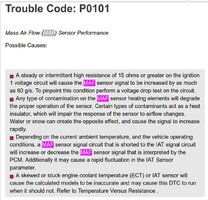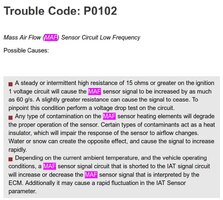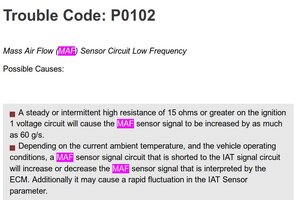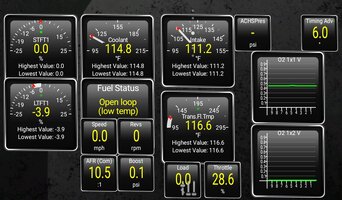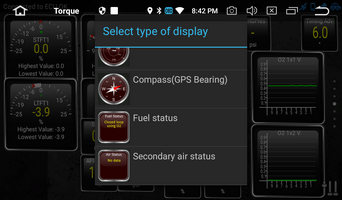My 2008 4.2 has been good but fuel mileage has been reducing. I have change out the front o2 sensor (would have done the back but its tough to get at the harness... maybe next time... probably doesn't matter in terms of fueling but it does throw a "weird code" often). I decided to give a new "aftermarket" MAF (ebray... he ha) after cleaning of the existing one didn't do much. It looked ok anyways.
Plug in the replacement, fired up torque, started the vehicle and things (trims, air volume, etc). So OK. But the next drive out, was monitoring things and see the LTFT start to "climb" negative instead of sitting around 0 (old unit and initial run with new). The air intake "volume" is running similar to the old unit at around 6gm/s (I think that the units). Of course, eventually the LTFT for a code of running to rich. I measured the IAT side of the sensor to compare with the old sensor... they both ran about 6M ohm. I then ran a measurement on the ground the signal pin pairs. The old unit is around 2kohms while the new one is around 1kohms. Maybe a design.... potentially doesn't matter since the signal is "pulse based". Further, a diode test of the same pin set give .9 v for new versus 1.9 for the old.
The thing that is unusual is that torque isn't registering air intake flows all over the place like a bad sensor issue..... so then why is the LTFT running away negatively? Any wisdom with a MAF?
Plug in the replacement, fired up torque, started the vehicle and things (trims, air volume, etc). So OK. But the next drive out, was monitoring things and see the LTFT start to "climb" negative instead of sitting around 0 (old unit and initial run with new). The air intake "volume" is running similar to the old unit at around 6gm/s (I think that the units). Of course, eventually the LTFT for a code of running to rich. I measured the IAT side of the sensor to compare with the old sensor... they both ran about 6M ohm. I then ran a measurement on the ground the signal pin pairs. The old unit is around 2kohms while the new one is around 1kohms. Maybe a design.... potentially doesn't matter since the signal is "pulse based". Further, a diode test of the same pin set give .9 v for new versus 1.9 for the old.
The thing that is unusual is that torque isn't registering air intake flows all over the place like a bad sensor issue..... so then why is the LTFT running away negatively? Any wisdom with a MAF?



